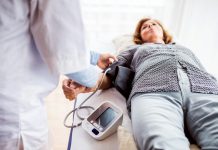
Is it possible to know which tests have the most “bang for the buck” in determining if a patient has heart disease?
Motivated by global statistics and heart disease in her own family, one University of Cincinnati student chose her capstone project to research the topic.
Delores Mincarelli, who earned a Master of Science in business analytics from UC in 2022, used progressive logistic modeling to predict the likelihood a person has heart disease, given results of diagnostic tests.
According to the Centers for Disease Control and Prevention (CDC), the leading cause of death worldwide is heart disease. In the United States alone, heart disease accounts for more than 650,000 fatalities annually.
Making the right treatment decisions for patients depends on a clinical test-based diagnosis of heart disease. Not all patients with chest pains undergo clinical testing.
One of the challenges facing the medical sector is developing more precise methods for predicting cardiovascular disease and more affordable testing early on to improve survival rates.
“As health care costs continue to rise, I believe it is prudent to compare costs of diagnostic tests with the incremental model improvement they offer to assess feasibility,” Mincarelli said.
Evaluating cost, time and accuracy
Mincarelli’s model used a combination of traditional risk factors in addition to diagnostic test results to predict the probability of heart disease.
Because the cost of diagnostic tests can be steep, she grouped variables into four groups ranging from low to high cost. These groups were added to the model progressively to see the impact of cost and accuracy.
The two highest cost variables also take the most time to administer.
Thallium: These are variables of radioactive imaging tracers injected into the veins that measure blood flow and oxygenation to the heart
Fluoroscopy: This is imaging that uses several pulses of X-ray beams to show internal organs in real-time on a screen. Standard X-rays are like photographs, whereas fluoroscopy is like a video
According to Mincarelli’s analysis, the highest cost variables did improve model accuracy. However, they also expose patients to radioactive substances and X-rays.
The capstone project concluded with an alternative testing solution to consider, Magnetocardiography (MCG).
Compared to the commonly used diagnostic tests mentioned above, MCG is a non-invasive and safe test, utilizing extremely sensitive devices to measure magnetic fields produced by electrical currents in the heart.
It can identify people with coronary artery heart disease in a few minutes with high accuracy.
Written by Diana M Lara.
If you care about heart health, please read studies that apple juice could benefit your heart health, and Yogurt may help lower the death risks of heart disease.
For more information about heart health, please see recent studies that thyroid hormone treatment may raise death risk in heart disease, and results showing Vitamin C linked to a lower risk of heart failure.



